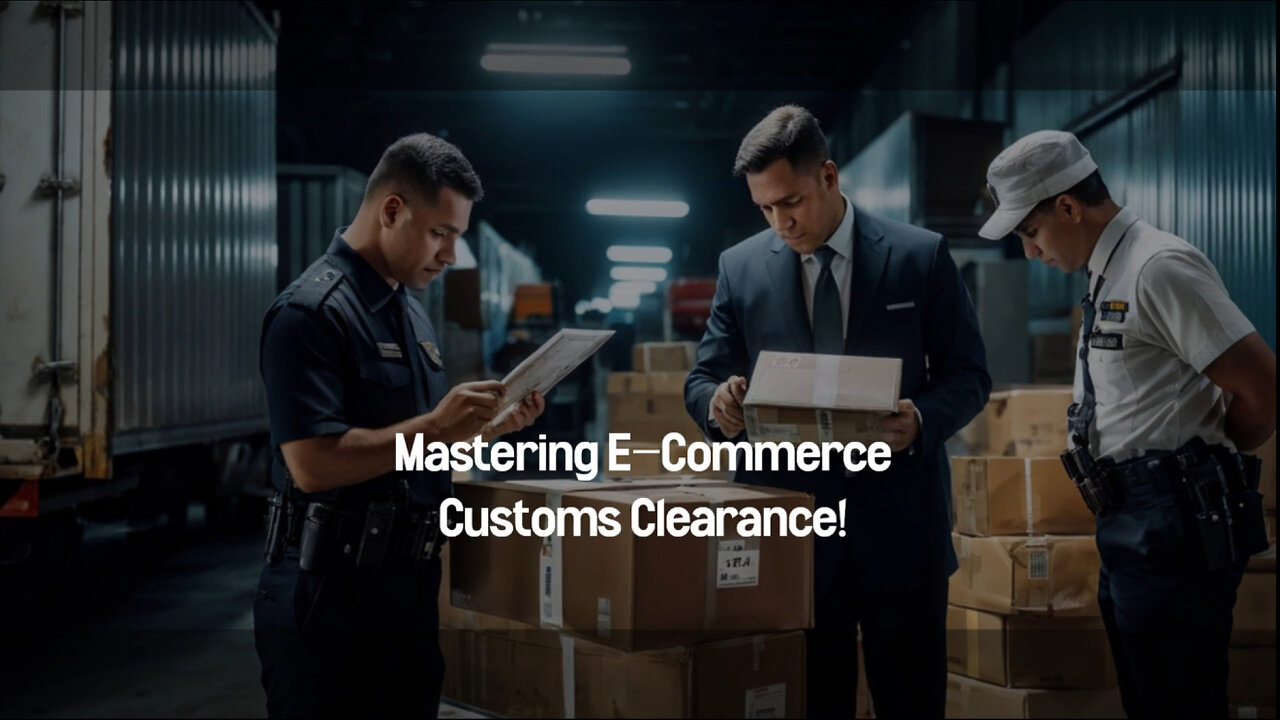Premium Only Content

E-commerce Shipping: The Key Differences in Customs Clearance
ISF Template | 562-453-7357 | isf@isftemplate.com | www.isftemplate.com
Customs clearance for e-commerce shipments involves the procedures and documentation required to legally import goods into a country. One key difference for e-commerce shipments is that they are usually of lower value and smaller in size compared to traditional cargo shipments. This means that the customs processes for e-commerce shipments are often simplified to facilitate the high volume of packages being sent globally.
One important aspect of customs clearance for e-commerce shipments is the concept of the de minimis threshold. This threshold refers to the maximum value of goods that can enter a country duty-free. Many countries have established de minimis thresholds specifically for e-commerce shipments to expedite the clearance process. These thresholds vary from country to country and can range from a few dollars to a few hundred dollars.
When it comes to customs documentation for e-commerce shipments, the requirements are usually less complex compared to traditional cargo shipments. Generally, a commercial invoice, packing list, and a simplified customs declaration are sufficient for e-commerce shipments. These documents provide crucial information about the goods, such as their value, quantity, and description, which helps customs officials assess the duties and taxes applicable.
E-commerce sellers need to be aware of customs duties and taxes that apply to their shipments. While some countries may have duty-free thresholds, others may charge customs duties and taxes right from the first dollar. Additionally, e-commerce sellers may encounter specific taxes or fees imposed by certain countries, such as value-added tax (VAT) or goods and services tax (GST). It is important for e-commerce businesses to understand these potential costs and factor them into their pricing and shipping strategies.
Importers, including e-commerce businesses, often need a customs bond to comply with customs regulations. A customs bond acts as a guarantee to the customs authorities that the importer will fulfill their obligations, such as paying duties and taxes promptly. Additionally, for shipments entering the United States, e-commerce businesses need to submit an Importer Security Filing (ISF), also known as a 10+2 filing. The ISF provides information about the shipment to US Customs and Border Protection prior to its arrival.
Understanding the differences in customs clearance for e-commerce shipments is vital for businesses involved in international trade. From the de minimis threshold and simplified customs documentation to customs duties and taxes, e-commerce businesses must navigate these unique requirements to ensure smooth customs clearance and timely delivery of their products.
#usimportbond
#isfcustomsbroker
#uscustomsclearing
#isfentry
Video Disclaimer Here: This video is designed for education and is unaffiliated with US government bodies.
00:33 - Customs Clearance for E-commerce
00:56 - De Minimis Threshold
01:24 - Customs Documentation
01:55 - Customs Duties and Taxes.
02:31 - Customs Bond and ISF
-

Jeff Ahern
2 hours ago $1.34 earnedFriday Freak out with Jeff Ahern ( The Dr Michael Schwartz interview)
14K2 -
 15:04
15:04
Misha Petrov
21 hours agoThese Leftist Tattoos Are UNHINGED!
24.7K79 -
 8:27
8:27
Dr. Nick Zyrowski
1 day agoWhat to Eat After Fasting - This Diet Heals You!
50.9K13 -
 15:15
15:15
Chris From The 740
13 hours ago $1.77 earnedThe C&H Precision Comp Is The SRO Alternative You've Been Waiting For
29K7 -
 24:02
24:02
Bek Lover Podcast
1 day agoAmerica Under Attack - Danger In Every State?
23.6K15 -
 1:03:40
1:03:40
Uncommon Sense In Current Times
1 day ago $1.44 earned"Bar Ministry: Reaching the Lost in Unlikely Places with Randall Reeder"
33.6K5 -
 1:01:01
1:01:01
The Tom Renz Show
22 hours ago"Gates Wants to Meet With Trump & Are Alternative Treatments Really Covered Up?"
20.9K17 -
 2:24:10
2:24:10
Price of Reason
18 hours agoCan Hollywood Recover After Years of WOKE Activism? Will 2025 See B.O. Reversal? Wukong vs Microsoft
70.6K38 -
 10:09:49
10:09:49
Jerry After Dark
21 hours agoHole In One Challenge | Presented by TGL
345K21 -
 3:56:39
3:56:39
Alex Zedra
13 hours agoLIVE! New Game | The Escape: Together
90.5K20